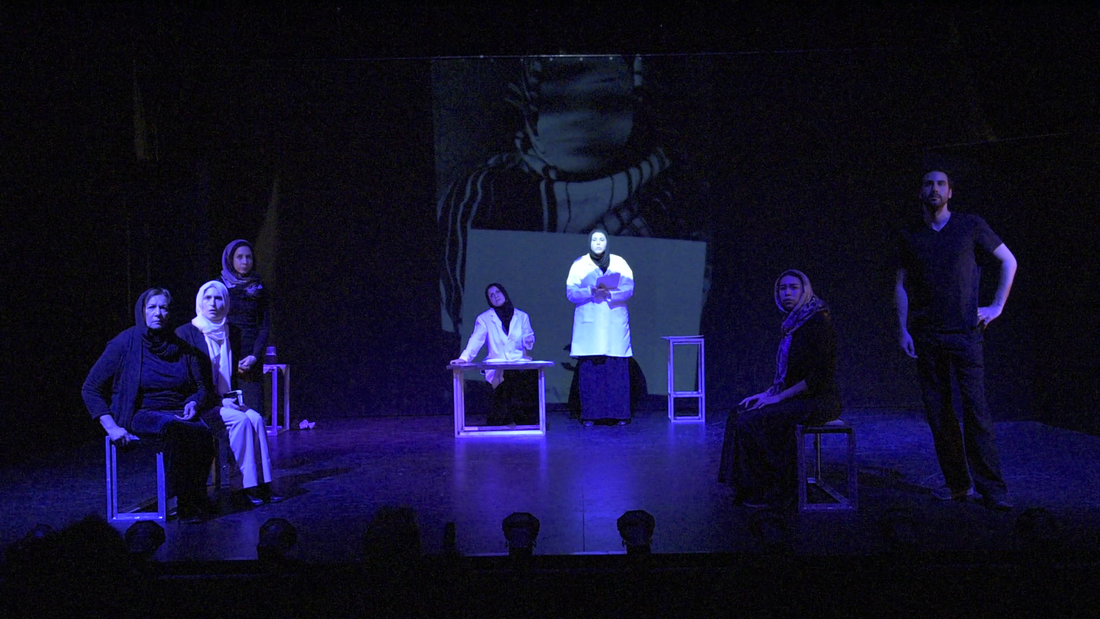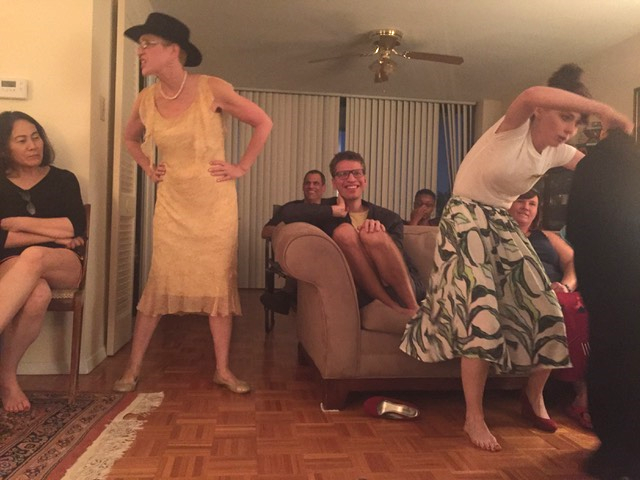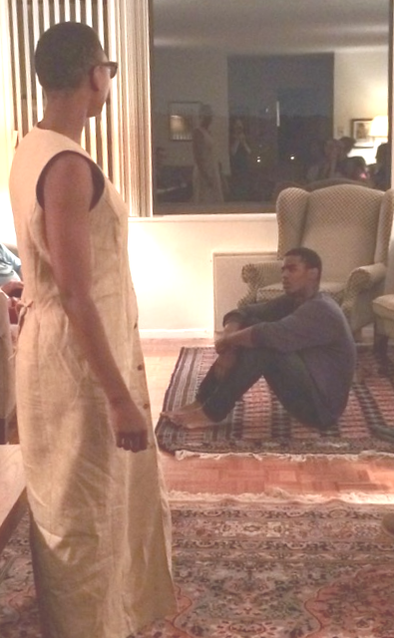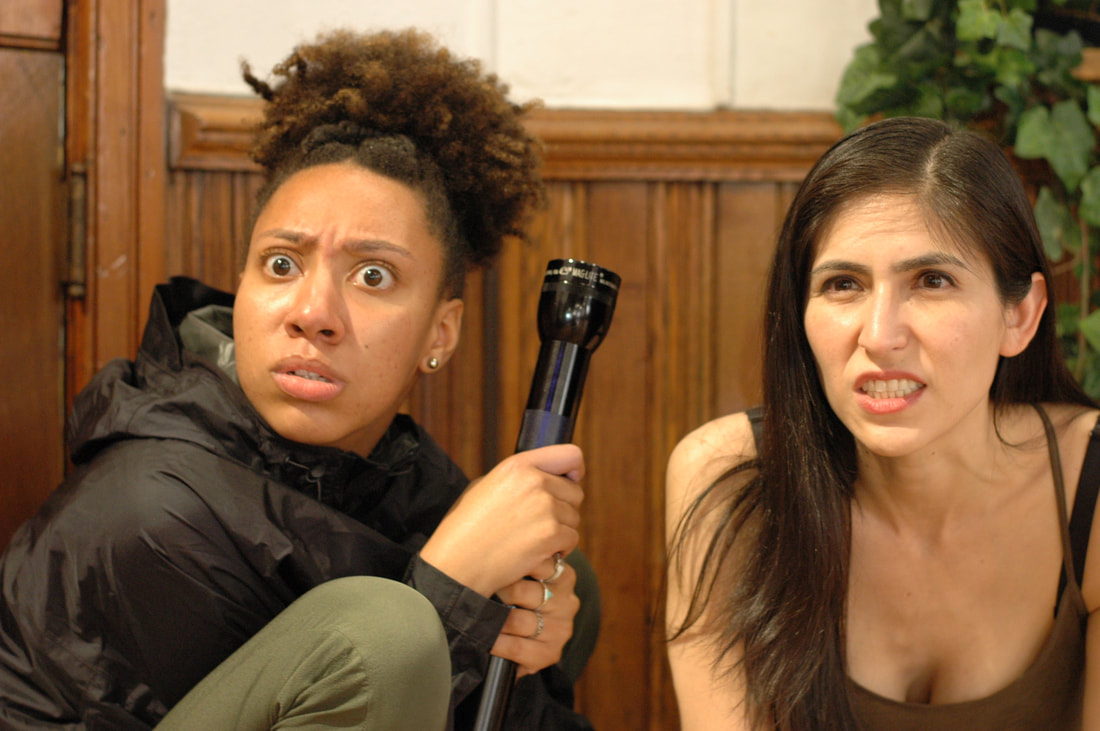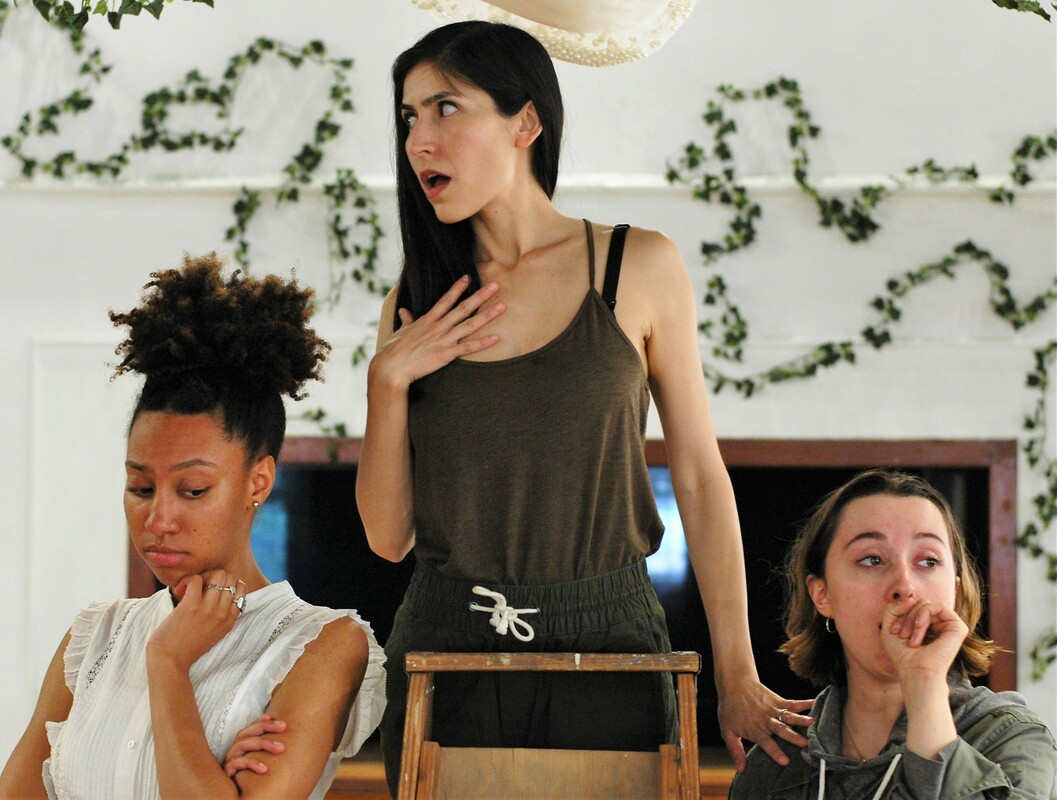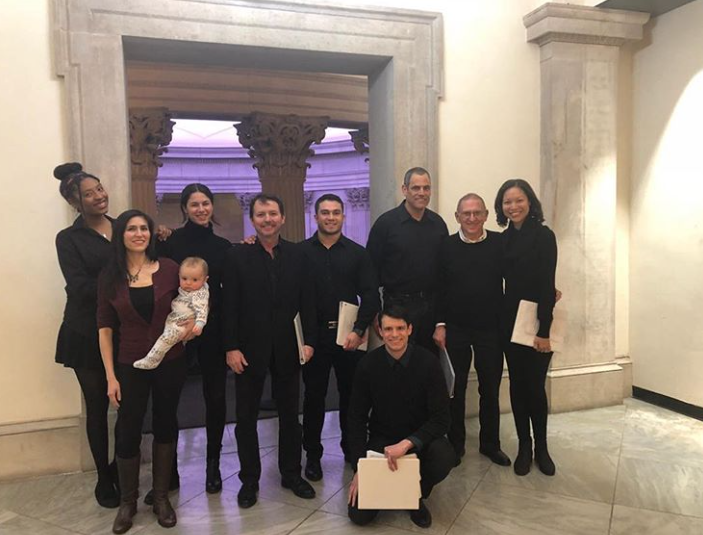Process & Performance
How do theater artists choose what to perform? How do they create an ensemble, design a costume, or craft an argument?
In their art, Thinkery & Verse place disparate traditions in direct conversation with one another. A performer from America, for example, listens to a poet from Iraq. Or a noir detective story receives in an interpretation in verse. Or we rehearse a new play in rapid repertory with a classic. In all cases, we pursue an 'edge effect,' where experimentation can flourish, and where we can challenge our artists to achieve new heights in creativity and aesthetics.
We keep 'the edge effect' principles in mind as we create our plays. Below, you will find photographs from our work, and examples of how we challenge new and canonical texts.
In their art, Thinkery & Verse place disparate traditions in direct conversation with one another. A performer from America, for example, listens to a poet from Iraq. Or a noir detective story receives in an interpretation in verse. Or we rehearse a new play in rapid repertory with a classic. In all cases, we pursue an 'edge effect,' where experimentation can flourish, and where we can challenge our artists to achieve new heights in creativity and aesthetics.
We keep 'the edge effect' principles in mind as we create our plays. Below, you will find photographs from our work, and examples of how we challenge new and canonical texts.
